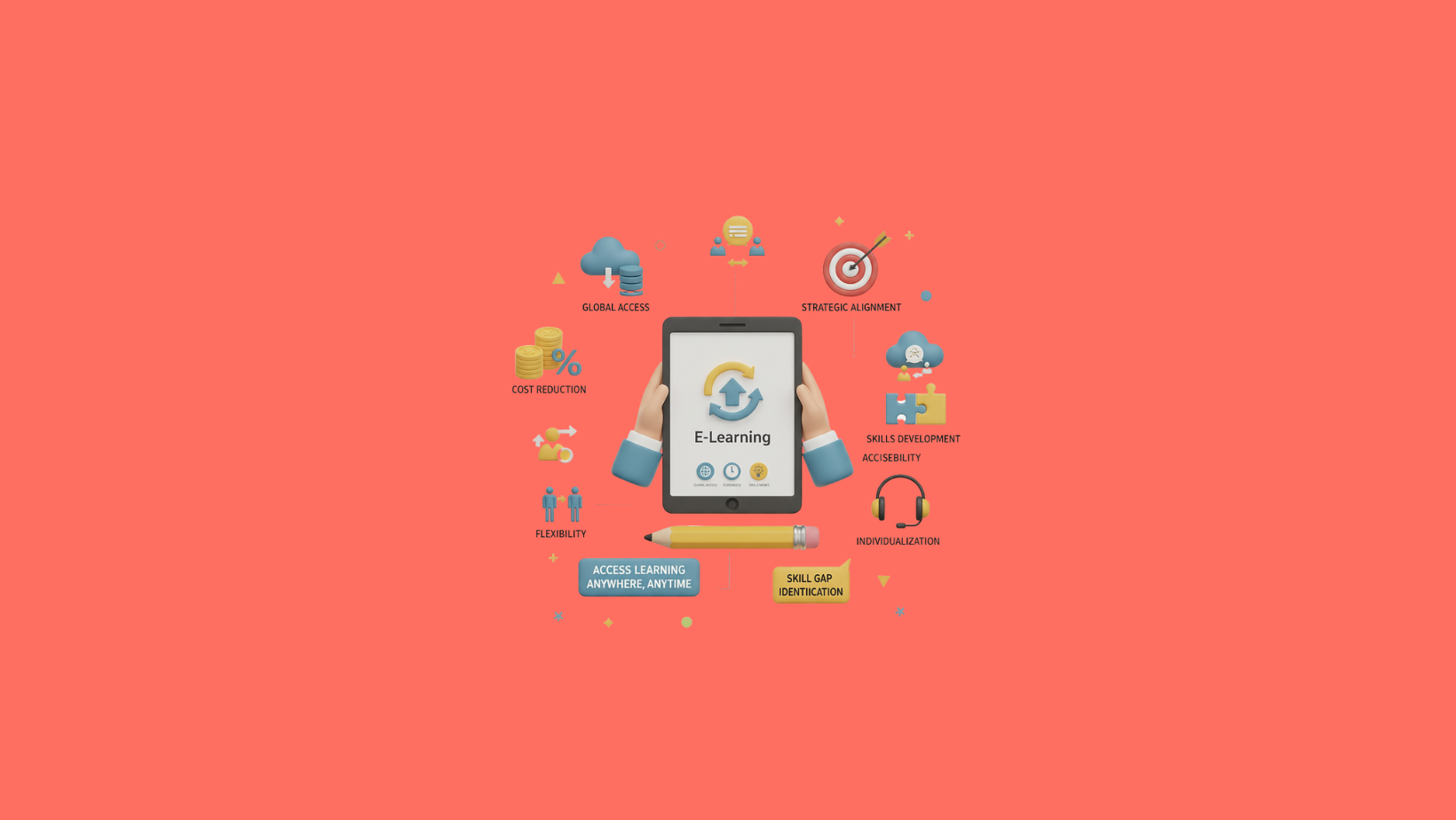In recent years, digital technology has become increasingly important in the way businesses are organized. Training is one of the areas most affected by this transition, and e-learning options are multiplying.
Since 2018, under the law on freedom to choose one’s professional future, companies have been obliged to contribute financially to their employees’ professional training. It is therefore necessary to select the most effective training methods possible. E-learning is therefore an obvious choice for companies wishing to increase the productivity of training and the organization’s competitiveness.
Today, we operate in an innovation-driven economic environment. For companies, employee adaptability and the ability to acquire new skills are significant challenges. In this article, we will discuss the effectiveness of e-learning training in meeting this challenge. Whether for the company or the employee, this mode of learning offers many advantages.
The Value of E-learning for Employees
The primary beneficiary of e-learning training within a company is, of course, the employee. For them, it simplifies the learning process, which until now required travel, scheduling appointments, and external trainers.
Access Training Anywhere, Anytime
Thanks to this alternative, employees can access learning materials such as module content, session preparation materials, podcasts, and recorded sessions at any time of day or night. In-person training requires the employee to travel to the location to meet with tutors face-to-face during scheduled hours. This can be constraining, especially during periods of heavy workload or “sprints.” E-learning allows for training schedules to be adapted to each individual and their professional schedules. This individualized follow-up is one of the great strengths of online training.
Involving Employees in Their Training Process
One of the significant weaknesses of traditional training is its lack of involvement for participants. Firstly, this learning method allows employees to learn at their own pace and according to their skill level and motivation. This individualization of the training process will enable employees to be involved in the training because they select it themselves.
Freedom in learning is a driving force for employee engagement in their careers. They become aware of their ability to steer their professional journey, which facilitates career development and increases involvement. With e-learning, it is very easy to boost learner engagement. For example, between two learning sessions, it is possible to create sub-modules to reinforce learners’ knowledge.
Finally, the employees’ choice of skills to develop through professional training is also essential for maximizing their engagement. Your employees may request a large number of skills to strengthen:
- Language training (e.g., through an e-learning platform like Udemy),
- Safety training related to the work performed,
- Soft skills training (stress management, autonomy, etc.)
- etc.
What are the benefits of e-learning for businesses?
The company also benefits from the individualization of training courses and increased access to them, thanks to e-learning. In a context of globalization, increasingly fierce competition, and rapid production driven by specific technological skills, the effectiveness of training becomes paramount.
Reduction in Training Costs
One of the most tangible benefits is the significant reduction in expenditure.
- Financial Savings: Studies show that e-learning is often 50% to 70% more cost-effective than in-person training.
- Concrete Example: A global tech company saved $3 million annually by replacing regional classroom sales training with a centralized e-learning platform, eliminating travel and instructor costs.
- Elimination of Ancillary Costs: The company eliminates costs associated with travel, accommodation, room rental, and physical materials.
- Volume Purchases: Purchasing licenses for multiple online courses enables negotiating more attractive rates with training organizations.
Improved HR Management and Strategy
The use of digital platforms (LMS – Learning Management System, integrated with an HRIS) offers better visibility and better control over skills management.
- Identification of Skill Gaps: Digital tools enable visualizing the gap between the skills required by the company’s strategy and those that employees have acquired.
- Concrete Example: A bank used an LMS integrated with its HRIS to identify that 40% of its customer service staff lacked proficiency in the new anti-money laundering (AML) protocols. They immediately deployed a mandatory, tracked e-learning module to efficiently close this gap.
- Strategic Alignment: The company can push targeted training that aligns not only with the employee’s profile but also with its overall strategic objectives.
- Monitoring and Evaluation: Online management enables tracking progress and employee development.
Standardization and Quality of Experience
E-learning ensures consistent training quality for all personnel.
- Standardization: Unlike in-person training, which depends on the trainer, e-learning provides standardized content to all employees, ensuring everyone has the same knowledge base.
- Concrete Example: A major retail chain uses e-learning to deploy its new brand guidelines and point-of-sale procedures across 500 locations simultaneously, guaranteeing that every employee receives the exact same, up-to-date information.
- Equal Opportunity: This uniformity ensures that all employees, regardless of their geographical location or schedule, have the same chances to access training and advance their careers.
E-learning is therefore a driver of growth that allows for quickly addressing skill shortages while optimizing the company’s resources.
The bottom line on e-learning
Online training is a driver of growth and development for both companies and the employees who benefit from it. In the digital age, e-learning has become an essential tool that complements face-to-face training, allowing for more personalized learning paths and providing an easy solution to the skills gap.
And we at BluDeskSoft are curious: how do you use e-learning in your organization? Have you noticed improvements in performance, engagement, or cost reduction?
We would love to hear about your experience, so drop us a message!

